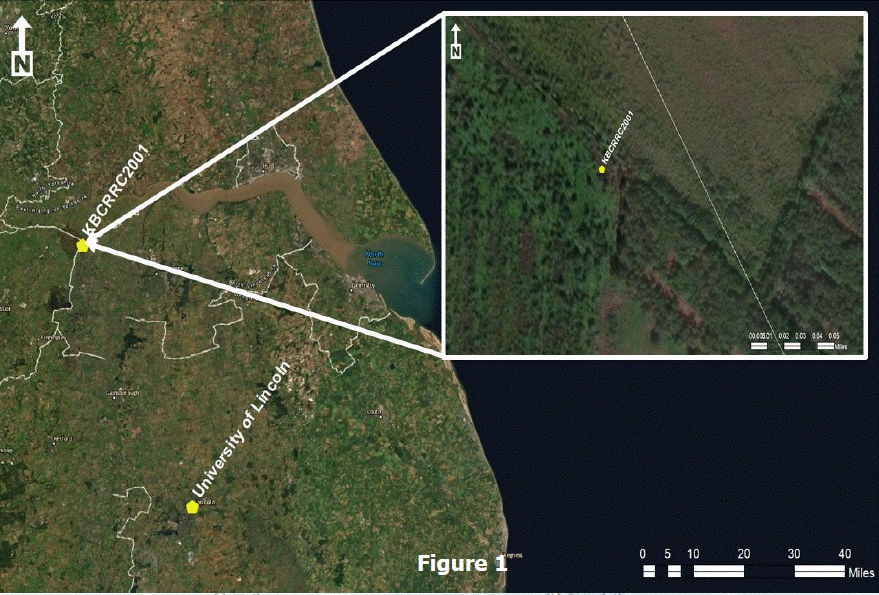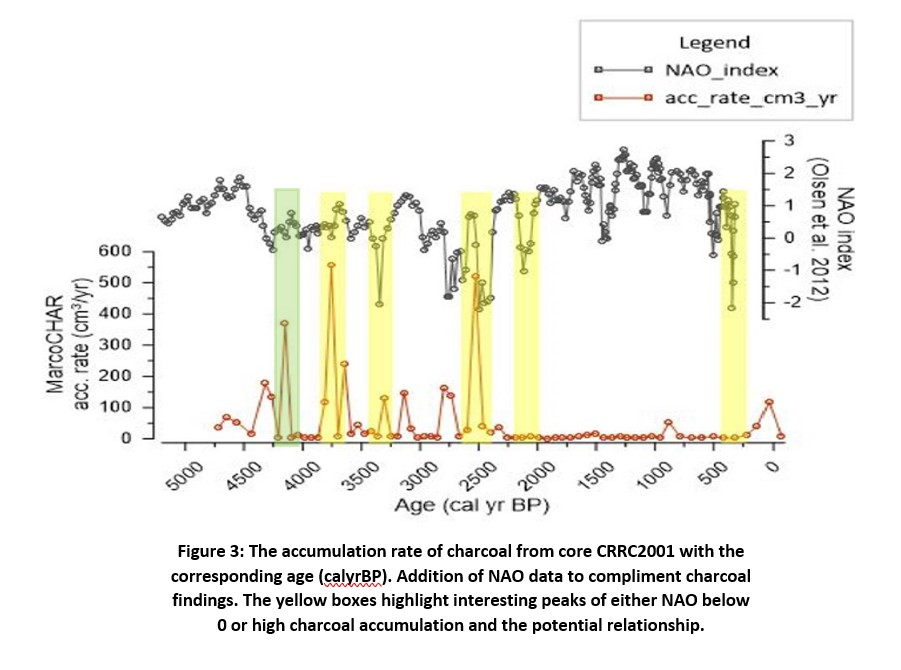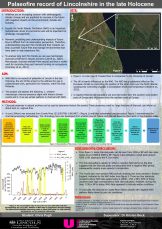By Christopher-Anthony Pugh //
 Will there be a future for our natural landscapes and life itself on Earth?
Will there be a future for our natural landscapes and life itself on Earth?
My project focuses on palaeofire within Lincolnshire in the late Holocene. Palaeofire is a term used within Quaternary Science to indicate an ancient (wild) fire. With anthropogenic (human caused) climate change becoming an increasing concern, the negative impacts upon the environment, climate and humans are expected to increase in the future.
But why would we care about historic wildfires? To demonstrate this, I use a quote famously used by Winston Churchill, “the longer you can look back the further forward you can look”. Within this project in particular, but also Quaternary Science research, we use natural archives such as peat to retrieve information about the past. For example, we can used charcoal preserved in natural archives to reconstruct past fire events.
For this project, I planned to determine long-term trends in fire using a peat core (KBCRRC2001) extracted from Crowle Moor (Figure 1). Macroscopic charcoal analysis from natural archives is a widely used approach for reconstructing past biomass burning patterns on ecosystems (Courtney et al., 2014). Crowle Moor is part of the Humberhead Peatlands National Nature Reserve and is one of the richest lowland peat vegetation areas in the north of England. The importance of Crowle Moor is beyond doubt (Van de Noort. R. 2004) as peatlands play an essential role within the biosphere (Rydin & Jeglum. 2015), as they are the largest natural terrestrial carbon stores. In addition to functions within ecosystem services such as carbon sequestration, hydrological controls, and biodiversity. Peat is an excellent archive for past environments as they remain wet and accumulate over time whilst preserving physical characteristics, e.g., pollen and charcoal.
 Figure 1 is a site map of Crowles Moor in comparison to the University of Lincoln.
Figure 1 is a site map of Crowles Moor in comparison to the University of Lincoln.
By analysing past environmental reconstructions, we can identify historic trends and peak event in fire, whilst aligning those with prehistoric events. This can be seen in Figure 2 below where I suggest a peak in charcoal (highlighted in green) potentially aligns with the 4.2ka event (a global period of abrupt climate change).
 Figure 2: The accumulation rate of charcoal from core CRRC2001 with the corresponding age (calyrBP). Addition of NAO data to compliment charcoal findings. The yellow boxes highlight interesting peaks of either NAO below 0 or high charcoal accumulation and the potential relationship.
Figure 2: The accumulation rate of charcoal from core CRRC2001 with the corresponding age (calyrBP). Addition of NAO data to compliment charcoal findings. The yellow boxes highlight interesting peaks of either NAO below 0 or high charcoal accumulation and the potential relationship.
In collaboration with my supervisor, Dr Kristen Beck, I have been able to develop my research skills within climate science and developed a passion for – reconstructing past environments. Whilst developing laboratory skills, I have been able to gain experience with software like R and Grapher and develop excel data processing skills. Additionally, I have been able to gain experience of creating an academic project poster which will also aid me further as I progress throughout my degree and further studies. These experiences and skills are transferable, and I will be able to take them with me into further academia and employment. Equally, the experience of working with my supervisor has been invaluable and has provided me a real insight into what academic research would be like.
This project has allowed me to further consider the potential of future research. From this study we would be able to branch out and analyse more cores extracted from across Lincoln/Lincolnshire to create a regional palaeofire fire reconstruction. There is a gap in palaeoclimate work, particularly fire histories, in the East Midlands and further research would help to address this gap. The growing use of charcoal analysis reflects a heightened interest within the paleoecological community to consider fire as an ecosystem process operating on a long- and short-term scale, as well as an increasing need by environmental managers to understand prehistoric fire regimes (Last et al.,2002).
*To view Chris’s research poster and presentation recording, please click on the thumbnails below:
References:
Jeglum J. K. and Rydin H. Peatlands and Climate Change. The Biology of Peatlands. 2015(2):296-316
Mustaphi CJC, Pisaric MFJ. A classification for macroscopic charcoal morphologies found in Holocene lacustrine sediments. Progress in Physical Geography: Earth and Environment. 2014;38(6):734-754.
Van de Noort, R. In: Coles, B. and Olivier, A. Thorne Moors: a contested wetland in north-eastern England. The Heritage Management of Wetlands in Europe. Brussels: EAC2001:133-140
